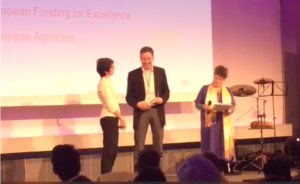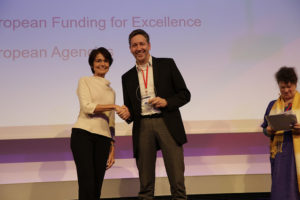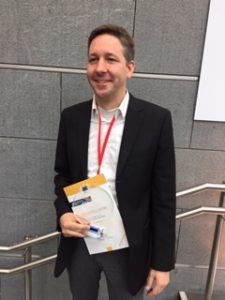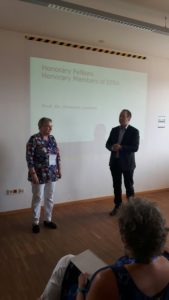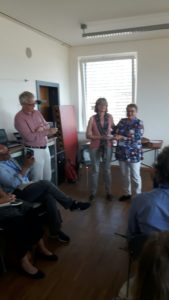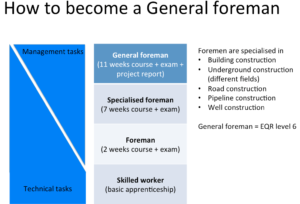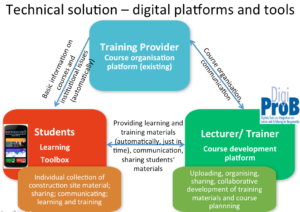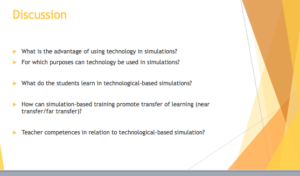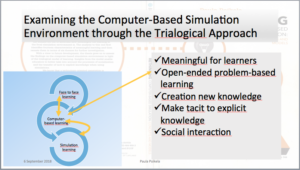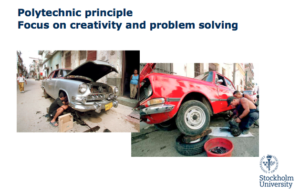Wrapping up the ECER 2019 experience – Part Five: Debates on VET research (past, present, future)
With this blog post I conclude a series of posts on the European Conference on Educational Research (ECER 2019) that took place earlier last week in Hamburg, Germany. The first post focused on the Opening session of the VETNET network (including background information on VETNET and other networks). The second post focused on the sessions that discussed the ongoing TACCLE projects (in which I and my colleagues are working). The third post focused on presentations that have an immediate relevance for the TACCLE project. The fourth post gave an account on recent developments in the VETNET network. With this final post I give insights into debates on VET research at different phase of the development of the VET research community.
The earliest phase: From ‘who is who’ to ‘networking the networks’
In the earliest phase of the VETNET network (when the setting up of the organisational structures was moving slowly) we were in the process of finding ourselves. It appeared that we represented different academic backgrounds, institutional affiliations and research interests. Some of us were from discipline-based institutes carrying out individual research in national contexts. Some of us came from interdisciplinary and policy-linked institutes with complex research & development projects. Some of us were already at that time working primarily in European projects with comparative and/or collaborative research designs. This gave rise to different views on, what kind of research activities and results should be presented in the conferences. One of the issues was, whether we should accept only completed research projects presented final results or whether we should give room for ongoing research projects to present their way s to common approaches. Luckily enough we found a working consensus that provided a basis for mutual respect and learning from each other.
Concerning the European cooperation projects we (who were working in them or with them) tried to develop sessions that promote learning from each other. Firstly we had symposia that promoted dialogue between parallel projects with closely matching themes. In the next phase we had ‘meeting point’ events for networks and journals. At a later date we tried to work with ‘growth of knowledge’ symposia that re-examined completed projects and platform-oriented symposia that tried to develop knowledge sharing platforms for specific project areas. This all belonged to the phase of ‘networking the networks’. Looking back, these activities were niche initiatives within the research community, supported by digital tools that were in their infancy and in a very early evolutionary phase of European cooperation.
The transitional phase: From critique on European Qualification Framework (EQF) to search for new themes
In the subsequent phase the inner life in the VETNET network had got settled and the VETNET board was working as a collective team. The diversity of VET research was kept in mind with a set of descriptors (key themes) that were used to organise the conference sessions. However, at this phase role of European cooperation was changing. Instead of discussing their own innovation agendas they were becoming more dependent on European policies and moving to new funding priorities. This brought into picture projects on making the European Qualification Framework (EQF), the European system of Credit Transfer in VET (ECVET), European models for e-Learning, evaluation frameworks for European projects and specific projects for ‘target groups’. Here I do not want argue that such themes couldn’t be innovative. Yet, the search for common grounds was taking place within policy-based priority areas.
However, during this period the community developed a culture of critical reflection on the policy concepts with which it was working. In several ECER conferences there were symposia in which we had critical discussions on the eclectic nature of the above frameworks. Also, we had analyses on the limited ‘unifying’ impact of qualification frameworks on VET cultures in countries that have similar frameworks. This prepared the grounds for moving to themes that look at new drivers of innovation and on the role of VET in contributing to change agendas.
The newest phase: Coming together to shape a European VET research agenda
Concerning the development towards the newest phase we need to note the achievements that I have mentioned in my previous blog post – the launch of the new journal IJRVET, the emergence of the new international conferences and the progress with book publications. Parallel to this the VETNET network initiated a global network under the umbrella of World Educational Research Association (WERA) with focus on internationalisation in VET research. This has broadened the range of participation and intensified the international exchanges beyond Europe. This has also contributed to a stronger conceptual orientation in European and international VET research. This can be seen in particular in a more differentiated and critical look at transfer of policies, VET arrangements and innovation concepts between different countries and global regions.
In this respect there has been an ongoing discussion on European VET research agenda in several ECER conferences. At ECER 2019 the discussion was guided by the challenge to promote integration of knowledge in VET research. On a more pragmatic level this discussion focused on a planning tool for VETNET sessions – how to bring different level (macro-, meso- and miro-level) in a common thematic area into dialogue with each other. Here we noted some progress in the sessions of this conference. Secondly, this challenge was discussed from the perspective, how to present ourselves and our messages to policy-makers and other stakeholders. Thirdly, this was discussed from the perspective of reviewing knowledge development in VET research in review articles.
Concerning the project work and conference sessions, this spirit has been present among others in sessions that focus on proactive preparation to new funding frameworks for innovation programmes. Also, this spirit has characterised sessions that discuss the role of researchers as catalysts of sustainable innovations and quality-awareness in larger R&D programmes. Finally, this spirit has become manifest in sessions on grassroot projects in which researchers study community-building processes that aim to improve pedagogic quality of VET.
—
I guess this is enough of the debates on VET research in the VETNET network. As I see it, we have come a long way forward from the very early phases of the community development. Thinking of the current phase, we are rather well prepared for future challenges. For me, as someone who has been involved from the beginning, this is very rewarding. Now that my time with ECER and active VETNET involvement is coming to an end, I can look forward to the future with an optimistic feeling. However, I have not finished my work yet and I have to put an effort to finish properly.
More blogs to come …

